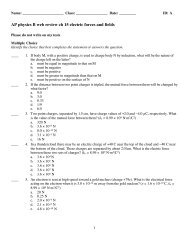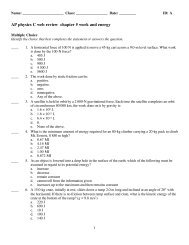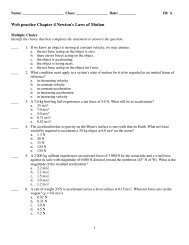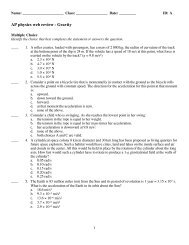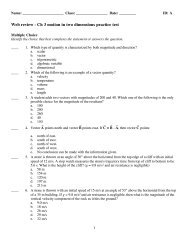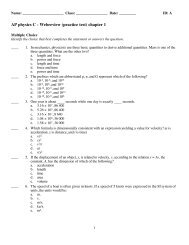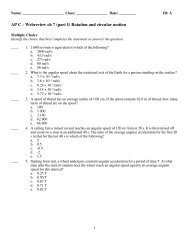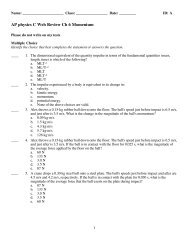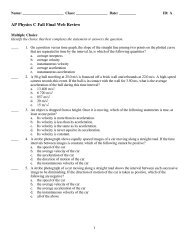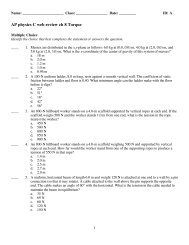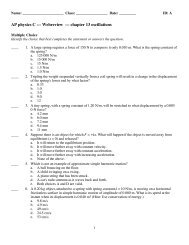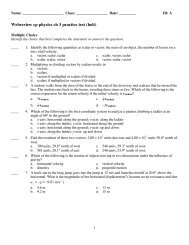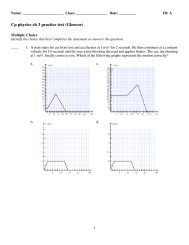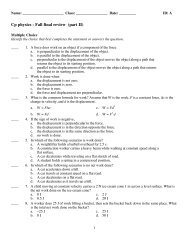AP Physics
AP Physics -â Static Electricity - Planet Holloway
AP Physics -â Static Electricity - Planet Holloway
Create successful ePaper yourself
Turn your PDF publications into a flip-book with our unique Google optimized e-Paper software.
Foil on thread type: One type is made from a small, light piece<br />
of metal foil that is attached to an insulated thread. A charged<br />
object is brought near the foil. The foil will be polarized and<br />
attracted to the charged object. When it touches the charged<br />
object it will be charged by conduction. Now having the same<br />
charge, it will be repelled.<br />
The angle formed by the thread with the vertical is proportional<br />
to the charge. If the foil is charged by a rubber rod, then one<br />
knows that it has a negative charge. An unknown charge can<br />
now be brought near the foil. If the charged foil is attracted, then you know that the object<br />
has a positive charge – remember, unlike charges attract. If the foil is repelled, then you<br />
know that the object has a negative charge – like charges repel.<br />
Twin hanging leaf type: This type of electroscope is usually enclosed in a transparent box<br />
or beaker. A metal rod has a metal ball mounted on its top. We will call this the electrode.<br />
The rod goes into the box where it has two very thin metal foil<br />
leaves attached to it. The metal leaves hang downward and are<br />
separated by a small space. They are both attached to the rod.<br />
A negatively charged rod is brought to the electrode on the top. The<br />
electrode is charged by conduction. The charge travels throughout<br />
the rod and into the metal foil leaves. They each have a negative<br />
charge and will repel each other. This means that they will lift away<br />
from the vertical. The angle they make is proportional to the<br />
charge.<br />
You charge up an electrophorus and give it a positive charge. You<br />
bring it to an electroscope to transfer the charge. How does a positive<br />
charge transfer?<br />
As the electrophorus nears the ball on the electrode of the<br />
electroscope, the electroscope becomes polarized. Free electrons<br />
collect on the ball, attracted to the positive charge on the plate of the<br />
electrophorus.<br />
The electrophorus has a pretty good charge, so usually the electrons will be so attracted to the plate<br />
as it nears that they will ionize the air and jump to the electrophorus in the form of a spark. The<br />
electrophorus is slightly less positive having collected some electrons and the electroscope is<br />
positive, having lost free electrons.<br />
276



